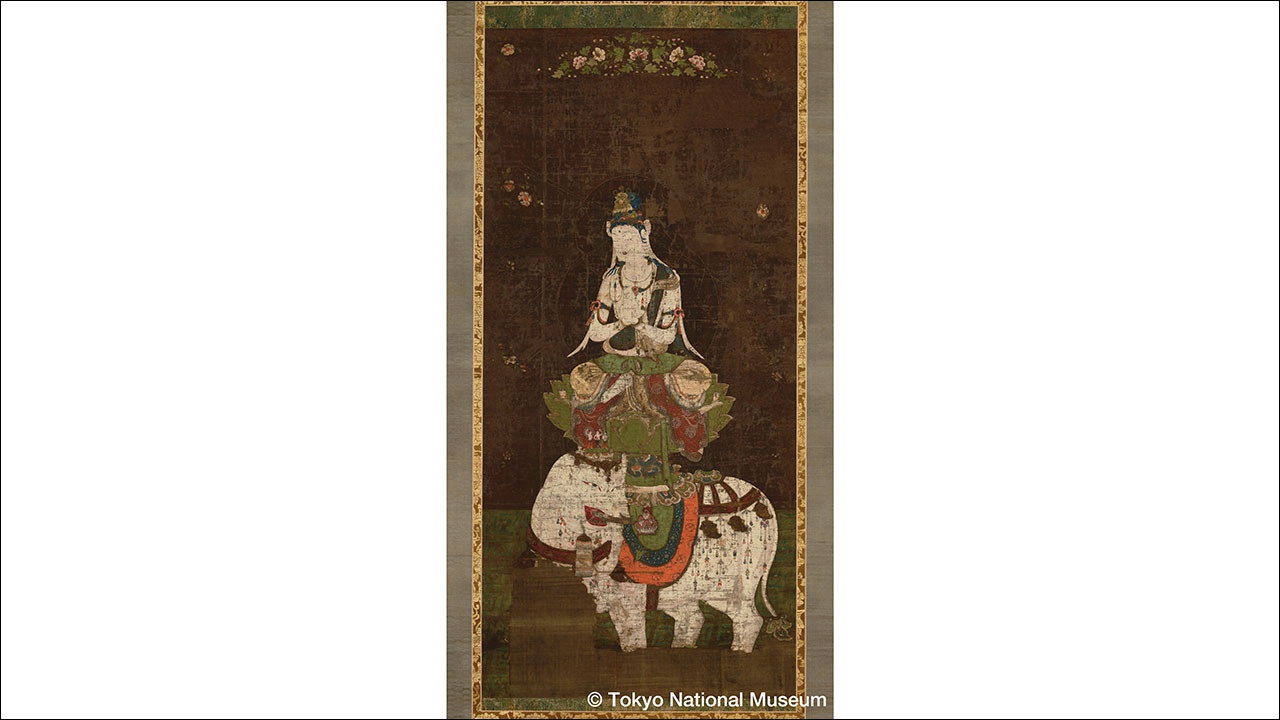Fugen Bosatsu (Samantabhadra Bodhisattva)
(Fugen Bosatsu zo)
Painted in the twelfth century, it is one of the greatest masterpieces of Japanese Buddhist painting. The picture shows a scene from the Lotus Sutra, a Buddhist text which was deeply revered in Japan in this period. Amid flowers depicted in pale colours fluttering down from above, this is the moment when Fugen Bosatsu – the Samantabhadra Bodhisattva – appears before the faithful from the Pure Land in the east, riding on a white, six-tusked elephant. 158.8 cm tall by 74.8 cm wide, it is painted on silk cloth in mineral pigments, gold and silver. The patterns depicted in kirikane – extremely fine strips of gold leaf glued onto the cloth – are particularly exquisite. The painting reflects the refined tastes of the aristocrats at the heart of political and cultural life, but there were other reasons, too, for creating such beautiful works.
